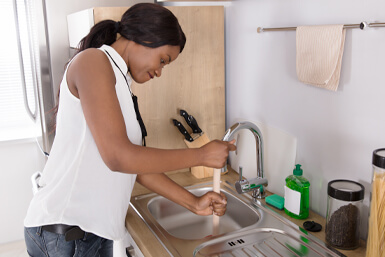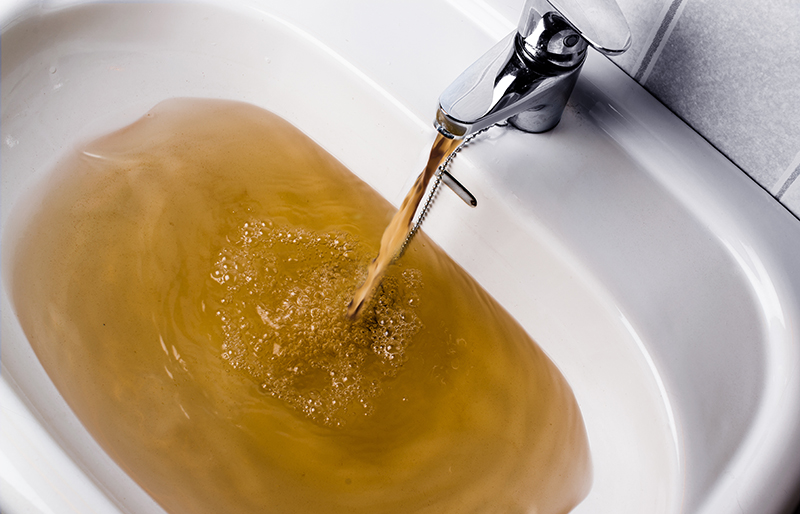Swift Solutions For Plumbing Noises in Your Residence
Swift Solutions For Plumbing Noises in Your Residence
Blog Article
Presented here down the page you will discover a good deal of professional guidance in relation to Why Your Water Pipes Are Noisy and How To Shut Them Up.

To identify loud plumbing, it is important to identify first whether the unwanted noises happen on the system's inlet side-in various other words, when water is transformed on-or on the drainpipe side. Sounds on the inlet side have actually differed reasons: excessive water pressure, worn shutoff and also tap components, poorly attached pumps or various other devices, inaccurately positioned pipeline fasteners, as well as plumbing runs containing too many limited bends or other restrictions. Sounds on the drain side usually originate from poor location or, similar to some inlet side noise, a layout consisting of tight bends.
Hissing
Hissing sound that occurs when a faucet is opened a little typically signals too much water pressure. Consult your regional public utility if you think this trouble; it will certainly be able to inform you the water stress in your location and can set up a pressurereducing shutoff on the inbound water pipeline if essential.
Various Other Inlet Side Noises
Creaking, squeaking, scratching, breaking, and also tapping typically are caused by the development or tightening of pipes, generally copper ones supplying hot water. The noises take place as the pipes slide against loose bolts or strike neighboring residence framework. You can typically identify the area of the trouble if the pipelines are revealed; simply follow the sound when the pipes are making noise. Most likely you will discover a loosened pipe wall mount or an area where pipelines lie so near flooring joists or various other mounting pieces that they clatter against them. Attaching foam pipeline insulation around the pipelines at the point of call must correct the issue. Be sure bands and also hangers are protected and give appropriate support. Where feasible, pipeline fasteners need to be connected to enormous structural components such as foundation wall surfaces rather than to mounting; doing so reduces the transmission of resonances from plumbing to surfaces that can amplify as well as move them. If connecting bolts to framing is inevitable, cover pipes with insulation or various other resilient material where they speak to fasteners, as well as sandwich completions of new fasteners in between rubber washing machines when installing them.
Fixing plumbing runs that deal with flow-restricting tight or various bends is a last resource that needs to be carried out only after getting in touch with an experienced plumbing professional. Regrettably, this circumstance is relatively typical in older homes that might not have been developed with indoor plumbing or that have seen several remodels, especially by beginners.
Chattering or Shrilling
Intense chattering or shrilling that happens when a valve or tap is turned on, which normally disappears when the fitting is opened completely, signals loose or faulty interior parts. The service is to replace the valve or faucet with a new one.
Pumps and also devices such as cleaning makers as well as dishwashing machines can transfer motor sound to pipelines if they are incorrectly connected. Connect such products to plumbing with plastic or rubber hoses-never stiff pipe-to isolate them.
Drainpipe Sound
On the drain side of plumbing, the chief objectives are to eliminate surface areas that can be struck by dropping or rushing water and also to insulate pipelines to include unavoidable noises.
In new building and construction, bathtubs, shower stalls, bathrooms, and also wallmounted sinks and also basins ought to be set on or against durable underlayments to lower the transmission of audio through them. Water-saving toilets and faucets are less noisy than traditional designs; mount them rather than older kinds even if codes in your area still permit utilizing older fixtures.
Drainpipes that do not run vertically to the basement or that branch right into horizontal pipeline runs supported at floor joists or other framing present particularly problematic noise troubles. Such pipelines are big enough to emit substantial vibration; they also lug considerable amounts of water, which makes the scenario worse. In brand-new building, specify cast-iron dirt pipes (the huge pipes that drain bathrooms) if you can afford them. Their enormity includes a lot of the noise made by water travelling through them. Likewise, prevent routing drainpipes in wall surfaces shared with rooms and spaces where individuals gather. Wall surfaces containing drainpipes need to be soundproofed as was described earlier, making use of dual panels of sound-insulating fiberboard as well as wallboard. Pipelines themselves can be covered with special fiberglass insulation made for the function; such pipelines have a resistant plastic skin (in some cases including lead). Outcomes are not constantly satisfactory.
Thudding
Thudding noise, frequently accompanied by trembling pipes, when a faucet or home appliance valve is shut off is a condition called water hammer. The noise and vibration are brought on by the resounding wave of stress in the water, which unexpectedly has no place to go. Often opening up a valve that discharges water quickly right into a section of piping containing a limitation, elbow, or tee installation can generate the exact same condition.
Water hammer can typically be cured by mounting installations called air chambers or shock absorbers in the plumbing to which the problem shutoffs or taps are connected. These tools enable the shock wave created by the halted circulation of water to dissipate in the air they contain, which (unlike water) is compressible.
Older plumbing systems might have short vertical areas of capped pipe behind wall surfaces on faucet competes the same objective; these can eventually full of water, reducing or ruining their effectiveness. The remedy is to drain pipes the water supply completely by turning off the major supply of water shutoff and also opening all faucets. Then open up the major supply valve as well as shut the taps individually, beginning with the tap nearest the shutoff and also finishing with the one farthest away.
WHY IS MY PLUMBING MAKING SO MUCH NOISE?
This noise indeed sounds like someone is banging a hammer against your pipes! It happens when a faucet is opened, allowed to run for a bit, then quickly shut — causing the rushing water to slam against the shut-off valve.
To remedy this, you’ll need to check and refill your air chamber. Air chambers are filled with — you guessed it — air and help absorb the shock of moving water (that comes to a sudden stop). Over time, these chambers can fill with water, making them less effective.
You’ll want to turn off your home’s water supply, then open ALL faucets (from the bathroom sink to outdoor hose bib) to drain your pipes. Then, turn the water back on and hopefully the noise stops! If you’re still hearing the sound, give us a call to examine further.
Whistles
Whistling sounds can be frustrating, as sometimes the source isn’t easily identified. However, if you can pinpoint which faucet or valve that may be the cause, you’ll likely encounter a worn gasket or washer — an easy fix if you replace the worn parts!Whistling sounds from elsewhere can mean a number of things — from high water pressure to mineral deposits. Your best plan of attack here is to give our plumbing experts a call. We’ll be able to determine where the noise is coming from and what the cause may be, then recommend an effective fix!
Cracks or Ticks
Cracking or ticking typically comes from hot water going through cold, copper pipes. This causes the copper to expand resulting in a cracking or ticking sound. Once the pipes stop expanding, the noise should stop as well.
Pro tip: you may want to lower the temperature of your water heater to see if that helps lessen the sound, or wrapping the pipe in insulation can also help muffle the noise.
Bangs
Bangs typically come from water pressure that’s too high. To test for high water pressure, get a pressure gauge and attach it to your faucet. Water pressure should be no higher than 80 psi (pounds per square inch) and also no lower than 40 psi. If you find a number greater than 80 psi, then you’ve found your problem!
Next step is to give us a call in order to install a pressure regulator. Trust us, you don’t want to wait to resolve this issue. Not only is the sound annoying, but high water pressure can be destructive to your home — including damaging certain appliances, like your washer and dishwasher.
Dripping
You might be accustom to the slow quiet drip your kitchen faucet makes. You might have even tuned out your bathroom sink dripping and drabbing all day long — but it’s time to find its cause.
A slow drip could signify a variety of easy to fix issues, such as a worn out O ring, or loose part. And by ignoring the drip, you could be wasting up to 2,000 gallons of water a year! So start conserving water — get it looked at ASAP.
https://www.pwessig.com/blog/2018/december/why-is-my-plumbing-making-so-much-noise-/

I recently found that blog posting on Why Your Water Pipes Are Noisy and How To Shut Them Up while doing a lookup on the web. Sharing is good. Helping others is fun. We love reading our article about Diagnose Unwanted Plumbing Noises.
High-quality emergency response guaranteed. Report this page